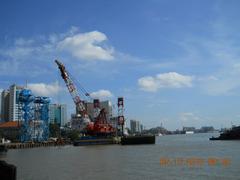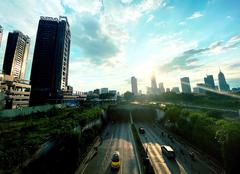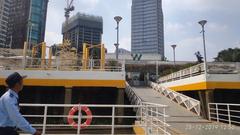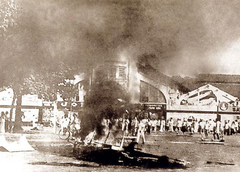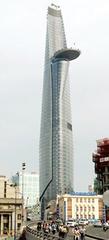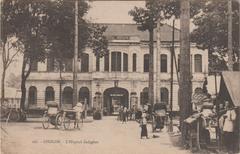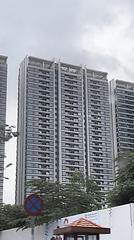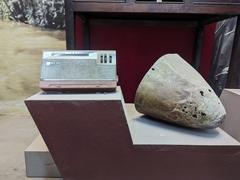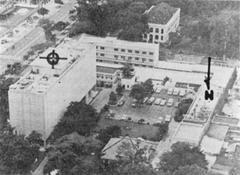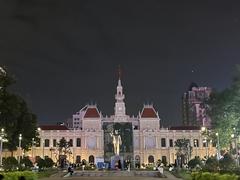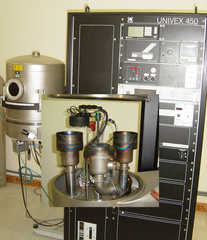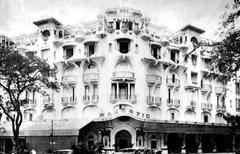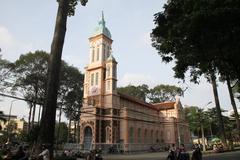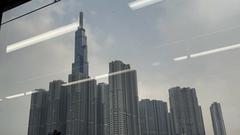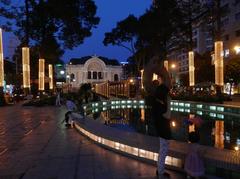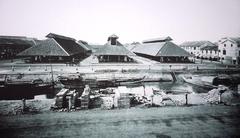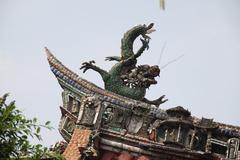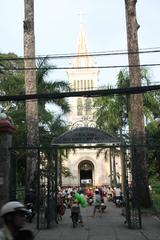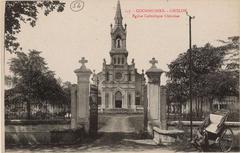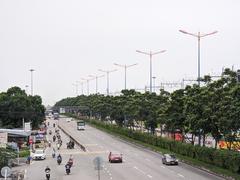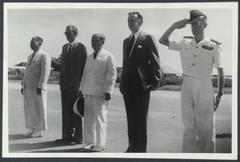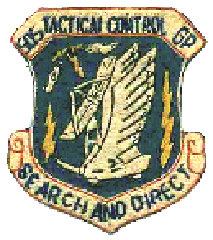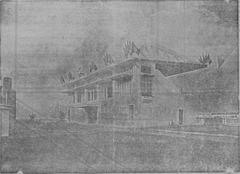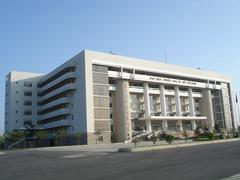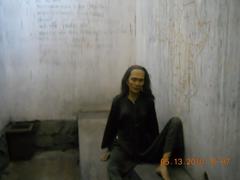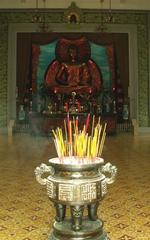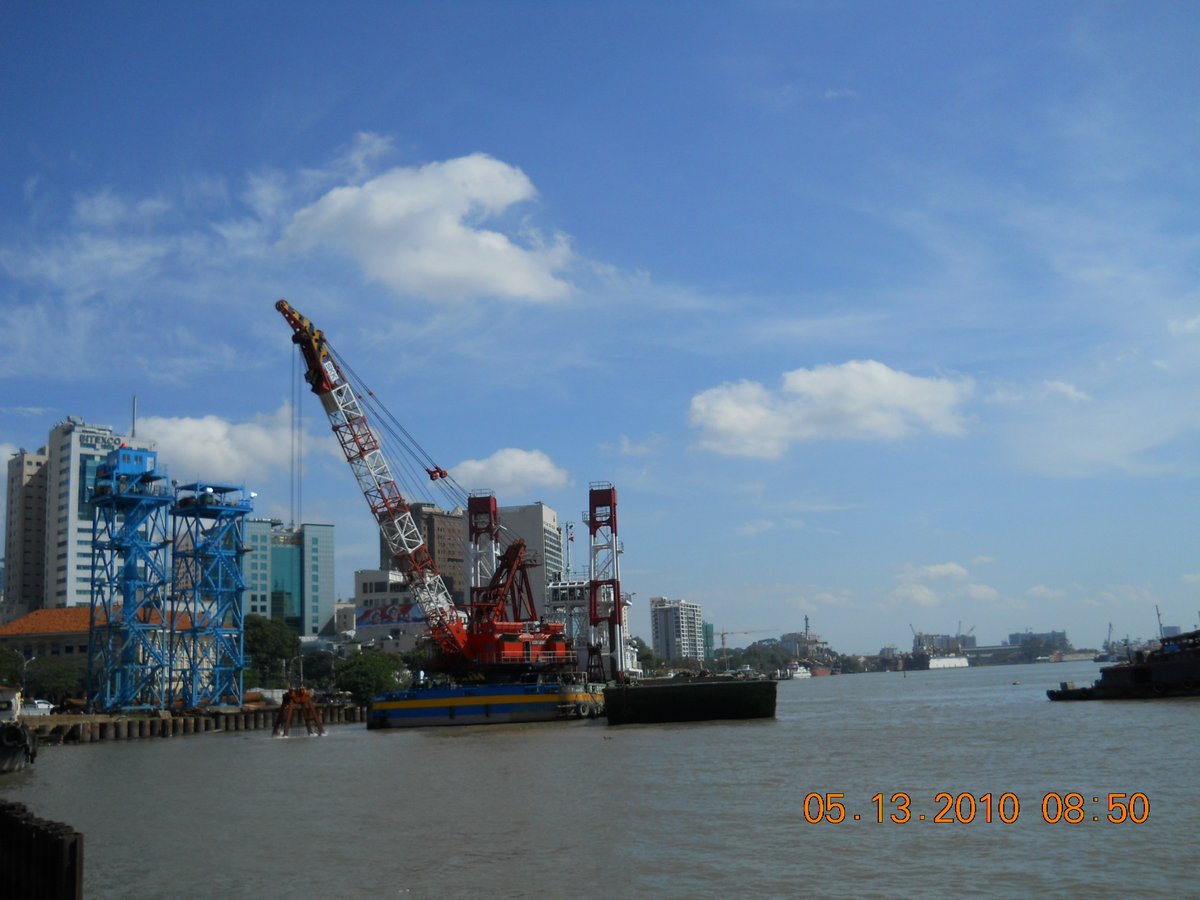
Saigon River Tunnel Visiting Hours, Tickets, and Guide to Thu Thiem Tunnel in Ho Chi Minh City
Date: 15/06/2025
Introduction: The Saigon River Tunnel and Its Significance
The Saigon River Tunnel, commonly known as the Thu Thiem Tunnel, is a monumental achievement in Ho Chi Minh City’s ongoing transformation. Opened in 2011, this 1.49-kilometer immersed tube tunnel connects the historic District 1 with the fast-developing Thu Thiem New Urban Area in District 2 (now part of Thu Duc City). As Southeast Asia’s longest cross-river tunnel, it has revolutionized urban mobility, eased congestion on city bridges, and catalyzed the growth of a vibrant new business and residential district. Built using advanced engineering techniques and international expertise—particularly from Japan—the tunnel stands as both a technological marvel and a symbol of the city’s shift from a colonial trade hub to a modern metropolis (Wikipedia, Sasaki, VietnamNet).
While the tunnel itself is primarily for vehicles and not open to pedestrians, the surrounding area offers riverside parks, promenades, and a rooftop park atop the tunnel, providing panoramic views of the Saigon River and city skyline. The tunnel area becomes especially lively during events like the city’s New Year’s Eve fireworks, drawing thousands of visitors (VietnamNet, SGGP). A new pedestrian bridge inspired by traditional nipa palm leaves is under construction, set to further improve connectivity between downtown and Thu Thiem by 2025.
This guide offers essential information for visitors, including practical details on visiting hours, accessibility, travel tips, nearby attractions, and the tunnel’s historical and strategic importance in Ho Chi Minh City’s urban development.
Contents
- Introduction
- Historical Context and Urban Development
- Engineering & Urban Vision
- Visiting Information: Hours, Tickets, Accessibility
- Nearby Attractions and Photo Spots
- Special Events: New Year’s Fireworks
- FAQs
- Conclusion & Recommendations
- Useful Links and Further Reading
Historical Context: The Saigon River and Urban Expansion
The Saigon River: The City’s Lifeline
The Saigon River, stretching 256 kilometers (with 80 km flowing through the city), has always been central to Ho Chi Minh City’s commerce and culture (Vietnam Discovery). Since the 17th century, it facilitated trade and migration, including the Nguyen Dynasty’s use for goods transport and international ships during the French colonial era. The river also played a significant role in Vietnam’s modern history—as the departure point for Ho Chi Minh in 1911.
The Need for Connectivity
With rapid urbanization, the river increasingly acted as both a connector and a barrier. District 1’s dense core was separated from the underdeveloped but strategic Thu Thiem Peninsula. As population growth strained bridges, the city envisioned new infrastructure—culminating in the Thu Thiem Tunnel—to unlock Thu Thiem’s potential and alleviate east-west traffic (Wikipedia).
The Saigon River Tunnel: Engineering Marvel and Urban Vision
Conception and Construction
The tunnel, a key segment of the East-West Highway, was built using the immersed tube method: six massive precast concrete sections were floated into position and submerged under the riverbed. Construction began in 2005, and the tunnel opened to traffic in November 2011. Measuring 33 meters wide and 9 meters high, the tunnel accommodates six lanes (three in each direction) and handles over 45,000 vehicles daily (Wikipedia).
Role in Thu Thiem Urban Development
The tunnel was pivotal in transforming the 647-hectare Thu Thiem Peninsula into a thriving new urban center, following a master plan by Sasaki Associates. This plan emphasizes sustainability, mixed-use growth, and green spaces while protecting the river’s ecology (Sasaki). Enhanced access led to rapid investment, with projections of 130,000 residents and a flourishing commercial hub.
Integration with Broader Infrastructure
The tunnel is part of a network of new bridges, metro lines, and expressways modernizing Ho Chi Minh City’s infrastructure (Saigon Times). A distinctive pedestrian bridge, funded privately and inspired by the nipa palm, will soon link District 1 and Thu Thiem, further improving accessibility (VietnamNet).
Visiting the Saigon River Tunnel: Hours, Tickets, and Accessibility
Visiting Hours
- Tunnel access: Open 24/7 for motor vehicles (cars, motorbikes, buses). There are no specific “tourist hours” since it is a functional traffic tunnel.
- Rooftop park and riverfront promenades: Generally open from 6:00 AM to 9:00 PM.
Tickets and Guided Tours
- Tunnel access: Free. No tickets required.
- Rooftop park and public spaces: Free.
- Guided tours: Some local tour operators and river cruises include the tunnel area as a stop, often focusing on engineering and urban development highlights.
Accessibility
- Vehicles: Cars, motorbikes, and buses can use the tunnel.
- Pedestrians/Bicycles: Not permitted inside the tunnel. Use the surrounding riverfront promenades or await the completion of the pedestrian bridge (scheduled for 2025).
- Rooftop park: Accessible by elevators and ramps, suitable for visitors with disabilities.
Travel Tips
- Avoid rush hours (7–9 AM, 5–7 PM) for smoother traffic.
- Use public transport or ride-hailing apps to avoid parking congestion.
- Enjoy the rooftop park for cityscape photography, especially at sunset.
- For special events, arrive early to secure a good viewing spot.
Nearby Attractions and Photo Opportunities
- Thu Thiem New Urban Area: Modern parks and waterfronts with striking city views.
- District 1: Landmark sites like Notre-Dame Cathedral Basilica, Saigon Opera House, and Ben Thanh Market.
- Saigon River Promenade: Ideal for sunset walks and panoramic photos of the tunnel entrances and skyline.
Image suggestion: Panoramic view of the tunnel entrance with the city skyline (Alt: “Saigon River Tunnel entrance and Ho Chi Minh City skyline”)
Special Events: New Year’s Eve Fireworks and Festivities
Fireworks and Countdown Celebrations
The Saigon River Tunnel is the centerpiece for Ho Chi Minh City’s New Year’s Eve fireworks. On December 31, a 15-minute fireworks display lights up the sky above the Thu Duc City tunnel entrance (VietnamNet). Major countdown events also take place at nearby Nguyen Hue Pedestrian Street and Bach Dang Wharf Park, featuring live performances and illuminated river displays (SGGP).
Additional Festivities
The area hosts sports events like marathons and cycling races, as well as cultural festivals, making it a hub for community celebrations during the holiday season (SGGP).
Frequently Asked Questions (FAQ)
Q: Can tourists walk through the Saigon River Tunnel?
A: No. The tunnel is only for motor vehicles. Pedestrian and bicycle access are not allowed.
Q: Are there tickets or fees to use the tunnel or rooftop park?
A: No. Both are free to use. Private venues with rooftop views may charge a fee.
Q: What are the best times to visit?
A: Daytime for sightseeing and sunset photos; New Year’s Eve for fireworks and festivities.
Q: Is the area accessible for people with disabilities?
A: The rooftop park and promenades are accessible, but event crowds can be challenging—arrive early.
Q: Are guided or virtual tours available?
A: Some local operators include the tunnel in city tours. Virtual tours are available on tourism websites.
Conclusion & Visitor Recommendations
The Saigon River Tunnel (Thu Thiem Tunnel) is more than a functional passage—it’s a gateway to understanding Ho Chi Minh City’s vision for sustainable growth. Since its opening in 2011, it has improved connectivity between District 1 and Thu Thiem, reduced congestion, and spurred economic development (JICA Evaluation, Sasaki). The tunnel’s cutting-edge construction and integration into the city’s broader infrastructure network showcase Vietnam’s engineering strengths and international collaboration.
Visitors are encouraged to explore the tunnel’s surroundings—enjoying riverside parks, rooftop views, and the vibrant energy during special events like New Year’s Eve. Use public transit for convenience, join a guided tour or river cruise for deeper insights, and check official resources for the latest event and travel updates. The Saigon River Tunnel remains a must-see for those fascinated by urban innovation and Ho Chi Minh City’s dynamic spirit (Wikipedia, Sasaki, VietnamNet).
Useful Links and Further Reading
- Saigon River Tunnel – Wikipedia
- Thu Thiem New Urban Area Project – Sasaki Associates
- Groundbreaking Pedestrian Bridge Project – VietnamNet
- New Year Fireworks Displays – VietnamNet
- HCMC Fireworks & Street Festivals – SGGP
- JICA Evaluation Report on Thu Thiem Tunnel Project
- Vietnam Discovery: Saigon River
- Saigon Times: Infrastructure Developments
